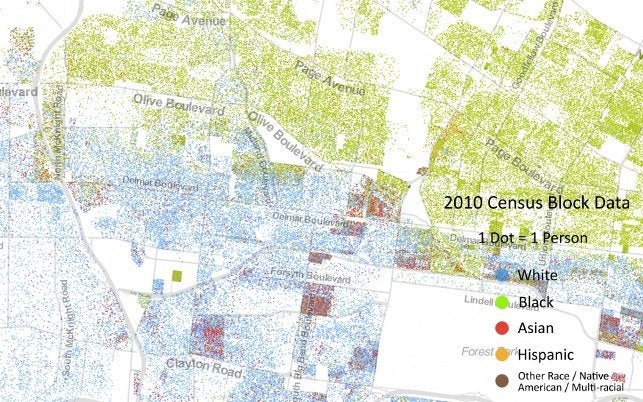
We’ve all played the game whack-a-mole. The objective is to hit each mole that pops up before it retreats. If you get it, rejoice. If not, it doesn’t matter, because that mole pops up somewhere else on the game board. The cognitive and physical resources spent to smash the previous mole must now be diverted to another location. This game continues until the buzzer sounds to announce that, congratulations, you are a loser. The player almost always loses. The only way to win is to cheat, rewire the game, or dismantle its mechanical parts and burn it to the ground.
Addressing the educational needs of kids living in St. Louis’ high poverty communities feels like an endless game of whack-a-mole. There are over 24 school districts in the surrounding St. Louis area, 30-plus charter schools and a plethora of private and parochial schools. Each year, these systems serve over 30,000 kids in St. Louis city alone. We encounter hurdles, such as child hunger, academic failure, dropout, high teacher turnover, and the list goes on.
Still, we press on, because kids and their very lives are at stake. There are many people working in education who are trying to change things. This “game,” however, is exhausting. It seems like once one district improves, parents move their families, money, and resources to attend these districts, leaving a new district fighting to keep its doors open. We don’t have nearly enough resources to keep up, so just as one thing gets better, another thing gets worse, and then the blaming finger comes out and we start pointing.
We like to target the issues as problems with parents (“They just aren’t engaged.”); teachers (“They don’t know how to work with our kids.”); or administrators (“S/He is inexperienced.”) but in actuality, we are all at fault. This is an us issue. No one is to blame, but we are all intertwined, forever connected in a web of life. Reverend Martin Luther King Jr. said it best. From the Birmingham County Jail, he wrote a letter about our connectedness:
“In a real sense, all life is inter-related. All men are caught in an inescapable network of mutuality, tied in a single garment of destiny. Whatever affects one directly, affects all indirectly. I can never be what I ought to be until you are what you ought to be, and you can never be what you ought to be until I am what I ought to be…This is the inter-related structure of reality.”
In the practice of system dynamics, a method of understanding the feedback and interconnectedness of issues, we have an iceberg metaphor for what has been described. The events and patterns are visible parts of the iceberg which are above the surface. Underneath all these patterns and events, however, are systems lurking.
These deeper parts are the mental models and values of people perpetuating the system ― the rules that govern our districts and how dollars are allocated are created from the mental models of our region’s leaders. These are the racial biases we have about sending our children to school with kids who don’t look like us or the worries voiced about children being bused to our neighborhoods when their schools are failing. Without understanding the system structure that creates these problems in the first place, we will forever be addressing the events we can see and rarely solving the problem that causes them.
The Deeper System Structure
It is clear that there are lines of racial division in St. Louis. For instance, consider this racial dot map of St. Louis city and the surrounding county.

A dot represents one person. Blue dots represent people who self-identify as white. Green dots represent people who identify as black, and red dots are people who identify as Asian.
The areas of the map that are green represent areas of north city, a result of what’s been termed the “Delmar Divide.” The areas of blue represent suburban school districts that are characterized by their rich resources and achievement. The school districts that have the lowest academic performance are those where the concentration of racial minorities are highest. If I overlaid a graph of employment, income, lead poisoning, low birth weight, and other hardships that arise from inequality and poverty, the figures would look very similar.
This is not an indicator of racial intelligence. We did not get here by accident. Observing the fundamental rules of the system, it is no surprise that the system creates inequities. Funding formulas for public school dollars have previously awarded resources in such a way that the rich get richer. We have school districts that are considered the best in the state sitting next to those that are barely able to retain their accreditation. We as a society created, sustained, and became complicit with these issues over time.
Let’s take heart, though. These system dynamics are complex, and though they seem resistant to change, they can be altered. The beauty about systems is that the same structure that creates undesirable events is the basis for which great ones can be established. This deep systems work is happening. We have a cadre of committed individuals who are doing their best to understand the system and change it for the long haul. There are few, if any, districts that are okay with the status quo and superintendents, home-grown and imported due to their success in other city districts, work tirelessly to do better for kids. Here are some examples:
Dr. Norm White, a professor of criminology and criminal justice at St. Louis University is working on the school-to-prison pipeline. His systems-level program, Shut It Down, provides education on racial equity and the implicit bias of school personnel to reduce school suspensions for African American children.
Dr. Art McCoy at Jennings School District has taken a systems approach to collaborate with local corporations and schools so that each of their high school students are graduating and attaining college education or has secured employment upon convocation.
Despite these promising practices, we still have a long way to go. To change the system, we need an “all hands on deck” mentality. Unless our region intentionally creates and supports equitable laws and practices around all the other systemic issues leading to poverty, our schools will continue to flounder. It’s not just the responsibility of our school leaders and nonprofit organizations to do this work. We have been doing it and would love some help. We need business leaders, lawyers, librarians, parents and non-parents alike to come alongside and dismantle and create a new system with us. We are currently in a marathon game of whack-a-mole and the only way to win is to reprogram the system.
